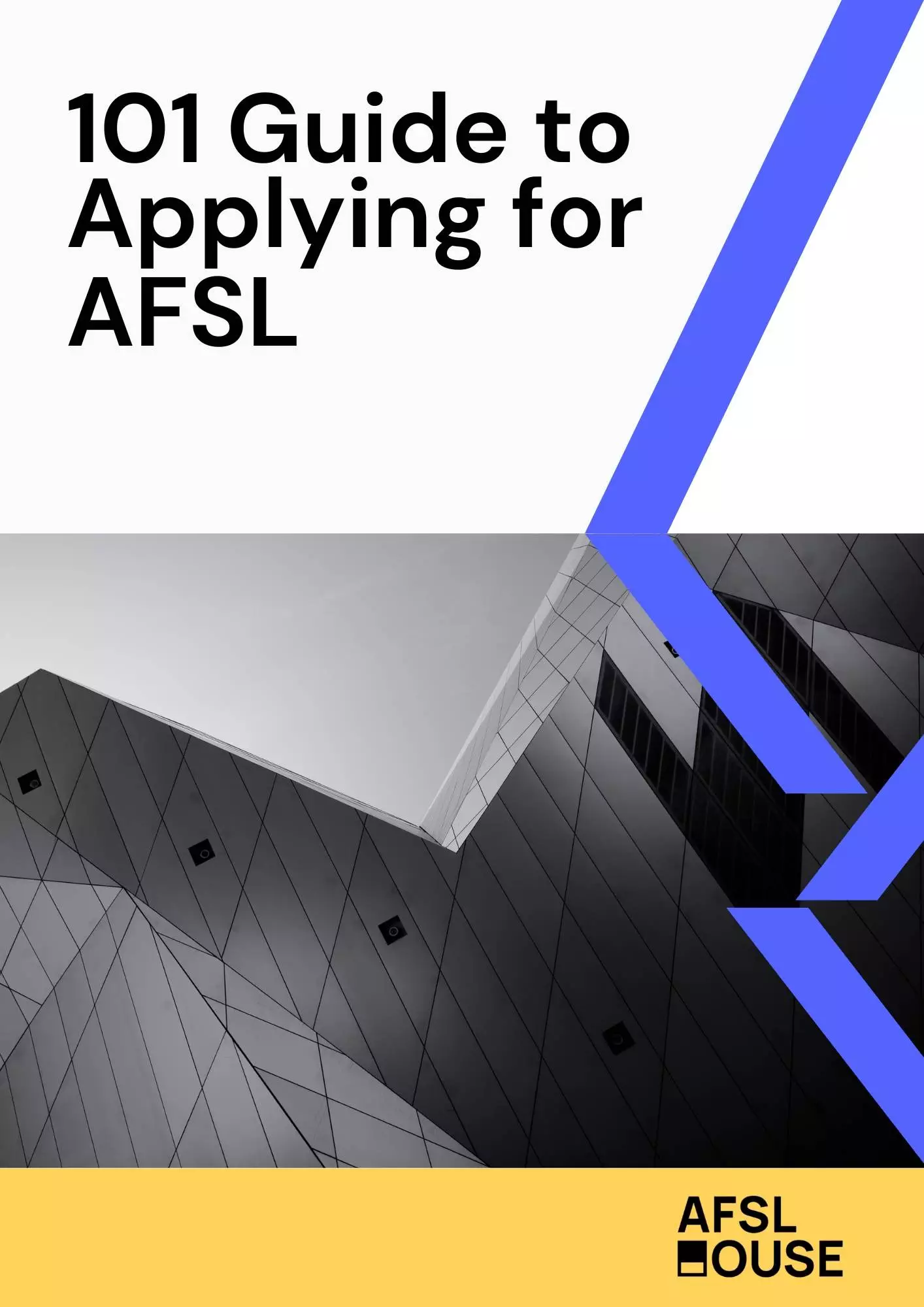Introduction
Obtaining an Australian Financial Services Licence (AFSL) is a crucial step for businesses seeking to provide financial services in Australia. The AFSL application process, overseen by the Australian Securities and Investments Commission (ASIC), ensures that financial service providers meet stringent standards of competence, financial resources, and compliance. However, it is important for businesses to carefully consider the obligations and responsibilities that come with being an authorised representative, as they will still be required to adhere to the same standards set by ASIC.
Navigating the AFSL application process can be complex and time-consuming, requiring a thorough understanding of the regulatory requirements and the preparation of extensive documentation. This comprehensive guide will walk you through the key steps involved in applying for an AFSL, from determining the necessary authorisations to submitting your application and meeting ongoing compliance obligations.
Understanding AFSL Authorisations and Responsible Managers
Determining Required Authorisations for Your Financial Services Licence
The first step in the AFSL application process is determining the necessary authorisations. These authorisations categorise the financial services your business intends to offer. Choosing the correct authorisations is crucial for legal operation and determines your obligations as a licensee. The authorisations are based on:
- Financial products: Specify the types of financial products your business will handle, such as derivatives, securities, managed investment schemes, bonds, superannuation, and insurance. For example, if your business deals with shares and bonds, your authorisation needs to cover these specific products.
- Financial services: Outline the services your business will provide, including advice, dealing, market making, custodial or depository services, and operating a registered scheme. If you plan to offer financial advice and deal in securities, both services must be included in your authorisation.
- Client types: Indicate whether your services will be offered to retail clients, wholesale clients, or both. This distinction is important as it affects your regulatory obligations. Serving retail clients typically involves more stringent consumer protection measures.
Choosing Your Responsible Managers (RMs)
Responsible Managers (RMs) are vital to demonstrating your business’s competence to ASIC. They oversee key financial services and regulatory compliance within your firm, meaning choosing the right RMs is critical to a successful AFSL application. Here’s what to consider:
1. Experience and Qualifications
- Educational Requirements: RMs typically need relevant qualifications, such as an Advanced Diploma in Financial Services or a Bachelor’s Degree in Business, Commerce, Economics, or Finance.
- Work Experience: ASIC expects RMs to have practical experience, such as:
- At least three of the last five years, or five of the last eight years, providing financial services under an AFSL with similar authorisations to those your business is applying for.
- For retail advice authorisations, RMs must hold RG146 qualifications (general advice) or meet Financial Adviser Education Standards (personal advice).
2. Fit and Proper Person Test
- RMs must pass ASIC’s character and integrity standards, which include:
- Background checks for criminal history and bankruptcy.
- Assessing potential disqualifications (e.g., past convictions for financial misconduct).
- For example, imagine a case where a potential RM has a past conviction for financial misconduct; this would likely disqualify them from the role.
3. Responsibilities
- Overseeing financial services and ensuring compliance with laws and regulations.
- Establishing and fostering a compliance culture within the business.
- For example, if a firm’s compliance processes are inadequate, the RM must rectify them to meet ASIC’s standards.
4. Number of RMs
- The required number of RMs depends on your firm’s size and service complexity:
- Large firms: Offering a variety of financial products to retail and wholesale clients will require multiple RMs.
- Small firms: Specialising in niche products may only need one or two RMs.
- For example, a large financial planning firm offering advice on a variety of products to both retail and wholesale clients would likely need more RMs than a boutique firm specialising in a niche financial product.
ASIC’s evaluation of your AFSL application hinges on the suitability and competence of your chosen RMs. Proper selection and detailed documentation of their qualifications and experience are crucial for approval.
Get Your Free Initial Consultation
Consult with one of our experienced AFSL Lawyers today.
Preparing and Submitting Your AFSL Application and Documents for ASIC
To legally operate a financial services business in Australia, obtaining an AFSL is essential. This process involves submitting a comprehensive application to ASIC, demonstrating your ability to meet strict regulatory standards. Success relies on detailed preparation, accurate information, and an understanding of the key requirements. However, obtaining an AFSL can be a complex and time-consuming process, often taking several months to complete.
Alternatively, for those looking to expedite the process, an alternative option is to purchase an existing AFSL from a holder who is looking to sell. This can provide a quicker route to becoming licensed, although it’s important to thoroughly research and evaluate any potential purchase to ensure it meets your business needs and regulatory obligations.
Core Proof Documents
The AFSL application process requires several core documents that prove your business’s competence and readiness to operate. These documents are critical for ensuring ASIC has a clear understanding of your capabilities:
1. FS01 – Online Application Form
The FS01 is the starting point of your application and must be submitted through ASIC’s online portal. This form collects fundamental details about your business, including its structure, operations, and objectives. Accuracy is essential here, as incomplete or incorrect submissions can lead to significant delays or rejection.
2. A5 – Business Description
To provide ASIC with a clear picture of your business, the A5 document must include:
- A detailed explanation of the financial services and products your business intends to offer.
- Information about your target client base, whether retail, wholesale, or both.
- Projections of growth, income sources, and how you plan to deliver your services.
Including a specific transaction example can help ASIC better understand your business operations and the context in which your services will be provided.
3. B1 – Table of Organisational Competence
This table highlights the qualifications, skills, and experience of your Responsible Managers (RMs). It serves as evidence of their capability to oversee the financial services for which your business is applying. A well-prepared B1 document can greatly strengthen your application.
4. Statements of Personal Information
Each RM must submit a signed statement confirming their good fame, character, and acceptance of their nomination. This requirement helps ASIC assess the integrity and suitability of the individuals responsible for your business operations.
5. B5 – Financial Proofs
These documents demonstrate your financial capacity to operate sustainably. ASIC requires:
- Signed financial statements no older than three months.
- A statement of financial position and performance.
- Cash flow projections showing your ability to meet ongoing operational needs.
Strong financial proofs indicate that your business is prepared to handle its obligations effectively.
Additional Proof Documents
Depending on the type of authorisations you seek, ASIC may request supplementary documents tailored to your business. These often include:
- Compliance Policies: For example, businesses with more than four advisers must outline their processes for monitoring, supervising, and training representatives.
- Industry-Specific Details: Certain industries, such as forex, may need to provide information about counterparties or liquidity providers.
It’s important that all additional documents align closely with your business’s actual operations. ASIC may request further details during their assessment to ensure full transparency.
Submitting Your Application to ASIC
After assembling all required documents, the submission process involves several key steps:
- Online Submission:
Submit the FS01 form via ASIC’s portal, along with the applicable application fee. - Document Submission:
Email the signed FS01 form and all finalised core and additional proof documents to ASIC. - Assessment Phase:
ASIC typically takes 4–6 months to assess applications. For complex applications, this timeframe may be extended. During this period, ASIC may request further clarification or additional documentation, known as “non-core proofs,” to gain a deeper understanding of your business. - Final Approval Requirements:
Before ASIC grants your AFSL, you may need to provide updated financial statements, professional indemnity insurance meeting ASIC’s Regulatory Guide 126, and membership in an external dispute resolution scheme. - Ongoing Resources and Processes:
Ensure that your business has adequate systems for compliance, conflict of interest management, and training. Additionally, disclosure documents, particularly for retail clients, must be accurate and up to date.
ASIC Assessment and Post-Submission Process
After submitting your AFSL application, ASIC conducts a thorough assessment process to ensure your business meets all regulatory requirements. An ASIC analyst is appointed to review your application and performs an initial check to confirm all required proof documents have been received.
ASIC Review and Requisitions
The ASIC analyst begins their detailed assessment by examining your submitted documentation. During this phase, you can expect to receive requisitions requesting additional information or clarification about specific aspects of your application. These requisitions commonly focus on:
- Responsible Manager competency evidence, including more detailed information about their experience providing specific financial services
- Further details about your proposed business operations and service delivery models
- Additional documentation regarding compliance arrangements and risk management systems
- Clarification about your financial resources and how you will meet ongoing capital requirements
The assessment period typically takes 4-6 months, though more complex applications may require additional time. It’s crucial to respond promptly and thoroughly to all ASIC requisitions to avoid delays in the assessment process.
Draft AFSL and Final Requisitions
Once ASIC is satisfied with your responses to their initial requisitions, they will provide a draft AFSL for your review. This draft outlines:
- The specific financial service authorisations being granted
- Any conditions that will apply to your license
- The types of clients you can service (retail, wholesale, or both)
- Requirements for maintaining organisational competence
At this stage, ASIC may issue final requisitions that typically require:
- Professional Indemnity Insurance documentation meeting ASIC’s requirements
- Updated financial statements and cash flow projections
- Confirmation of external dispute resolution scheme membership
- Evidence that all compliance systems and procedures are in place
You must carefully review the draft AFSL to ensure all authorisations and conditions align with your business needs. Any discrepancies should be addressed with ASIC before the final license is issued.
Ongoing Compliance and Post-Licensing Requirements
Ongoing Procedural Documentation
AFSL holders must maintain comprehensive procedural documentation to meet their regulatory obligations. This includes detailed compliance procedures, risk management systems, and training programs for representatives. The documentation must accurately reflect how the business operates and demonstrate ongoing adherence to financial services laws and regulations. For example, AFSL holders must ensure that their representatives and key personnel meet the fit and proper test as an ongoing compliance obligation as required by ASIC. It is crucial for AFSL holders to regularly review and update their procedural documentation to align with any changes in regulations and to consistently meet the fit and proper test requirements.
ASIC Portals and Online Access
Four essential ASIC portals require registration and ongoing management:
- AFS Licensee Portal – Used for updating AFSL details, including address changes, Responsible Manager modifications, and authorisation variations. Regular monitoring ensures contact information remains current for timely ASIC communications.
- ASIC Connect Portal – Enables the appointment of Authorised Representatives and Financial Advisers, along with Business Name/ABN registrations. This platform streamlines the process of managing representative relationships.
- ASIC Regulatory Portal – Facilitates regulatory compliance through breach reporting, industry funding metrics submissions, and client money reporting requirements. All regulatory lodgments must be completed through this dedicated channel.
- Companies Portal – Allows officeholders to manage company details, including updates to addresses, officeholder information, shareholding structures, and other corporate records.
Additional Requirements (Auditor, AUSTRAC, Representatives, Operations)
Several critical post-licensing obligations must be fulfilled:
- Auditor Appointment – An auditor must be appointed within one month of AFSL grant, with Form FS06 submitted to ASIC within 14 days of appointment.
- AUSTRAC Enrolment – Entities providing designated services must enrol with AUSTRAC within 28 days of commencing operations through AUSTRAC Online.
- Representative Management – All Authorised Representative and Financial Adviser appointments must be notified to ASIC within 30 days through ASIC Connect, including any subsequent changes to their details.
- Operational Commencement – Financial services must begin within six months of receiving the AFSL. Extensions may be requested with valid justification, but failure to commence operations can result in licence cancellation.
Conclusion
Obtaining an AFSL requires careful planning, thorough preparation, and meticulous attention to detail throughout the application process. The journey from initial consideration to final approval demands a comprehensive understanding of regulatory requirements and a clear demonstration of organisational competence, financial resources, and compliance capabilities.
For tailored solutions and practical support in navigating the complexities of the AFSL application process, consider contacting our AFSL Application lawyers at AFSL House. We offer expert guidance and resources to help you manage each stage of the application effectively, ensuring AFSL regulatory compliance, minimising potential delays, and building a solid foundation for your financial services business in Australia.
Frequently Asked Questions
AFSL authorisations categorise the financial services a business can offer. These are based on financial products (e.g., securities, derivatives, managed investments), financial services (e.g., advice, dealing, custodial services), and client types (retail, wholesale, or both).
Responsible Managers (RMs) oversee key financial services and ensure regulatory compliance. They foster a compliance culture, manage risks, and supervise representatives providing financial services. RMs are crucial for demonstrating competence to ASIC.
The AFSL application process typically takes 4-6 months. More complex applications may require additional time for ASIC to assess.
Costs involved in applying for an AFSL include the ASIC application fee, preparing documentation (core proofs, additional proofs), and potentially, consultant fees.
Ongoing compliance involves maintaining procedural documentation, meeting the financial requirements and obligations (such as certain level of cashflow), using ASIC portals for updates and reporting, appointing an auditor, enrolling with AUSTRAC if applicable, managing representatives, and commencing operations within six months of licensing.
Operating without a necessary AFSL is an offence and can result in penalties. It is crucial to obtain the correct authorisation before providing financial services.
ASIC provides resources like the AFS Licensing Kit and sample applications. Compliance consultants can also offer assistance.
Thorough preparation, accurate information, complete documentation, and addressing ASIC’s requisitions promptly are key to a successful application. Professional guidance from a compliance consultant can be beneficial.
Varying an existing AFSL involves notifying ASIC of changes to authorisations, responsible managers, or other key details through the appropriate ASIC portal. This ensures the licence remains current and reflects the business’s activities.
Disclaimer: All information provided in this article is strictly general in nature and is not intended to be, nor should it be relied upon as, legal advice.
















